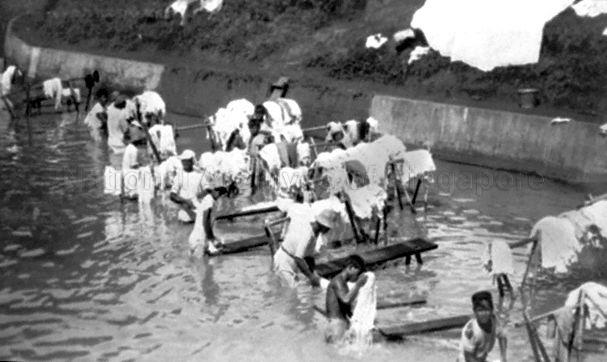The early migrants who landed in Singapore in the 1920s were in for a rude shock.
Yes, Singapore was a thriving port city with different cultures and new ways of life.
However, on the far end of experiences that rated poorly was the real possibility of catching and dying from diseases.
While many Europeans took a while to get used to the hot and dusty tropics, the heat was probably the least of their concerns.
This was because sanitation was poor and that made it extremely likely for one to catch nasty diseases and ailments.
According to an account by George L. Peet in Rickshaw Reporter, these were some of the common ailments that the Europeans suffered from upon reaching our shores.
Dengue fever
Dengue is widespread in the tropics because the hot and wet climate is ideal for mosquitoes to thrive.
According to Peet, almost everybody in the European community got dengue shortly after they arrived, but usually never again after the first time.
He described his ordeal with dengue, calling it "breakbone fever" because of the aches it caused:
"Within a week or two of my arrival I was lying on that bed sweating and aching for several days with dengue fever, known as 'breakbone fever' in some tropical countries because of the intense muscular pain that one has with it down the back and legs."
While dengue fever still exists in Singapore today, it no longer plagues every single traveller upon their arrival.
 Source: NEA
Source: NEA
[related_story]
Dhoby itch
Another common problem experienced during in the past was the "dhoby itch". This nasty thing is a ringworm that specifically hit the groin area.
The affliction got its name because it was "believed to be contracted from clothing brought back by the dhoby".
In the 19th century, dhobies were Indian washermen who would collect soiled linen and wash them at Stamford Canal. They would then dry the laundry at the field beside the canal.
 Photo from NAS
Photo from NAS
The dhoby itch was thought to be brought about by the germs on the clothes during the laundering process.
Treating the itch was (and probably still is) a painful process:
"The treatment was to paint the reddened semi-circle with a nasty preparation from the chemist, and that very private application required willpower, for it was quite painful."
Like dengue, Peet also claimed that it was something that they soon got used to:
"One's skin seemed to become immune to "dhoby itch" sooner or later; but newcomers - of both sexes - almost always got it."
Constipation
In the past, the European community in Singapore did not drink enough water due to the questionable quality of the resource here.
Even after British engineers of the water department claimed that the water was safe to drink, many were not convinced by the filters.
Instead, their choice of beverage was bottled sodas.
Referring to the European community in those days, Peet said he "always suspected that the frequent consumption of fizzy drinks must have had something to do with the constipation that was so common in those days".
Another factor that he attributed to their constipation was also their diet, which was essentially an unbalanced one:
"...The main cause of this malfunctioning was undoubtedly the unbalanced menu in the dining room downstairs - too much protein and carbohydrates, not enough fruit and vegetables. Moreover, we all ate too much... I think most Europeans over-ate in those days."
To remedy the situation, many had to rely on laxatives and purgatives.
Singapore foot
The bathrooms in Singapore were described as "primitive and disgusting", and one was likely to get foot fungus from it. This fungal infection was commonly referred to as "Singapore foot."
Because the bathrooms were dark and unhygienic, it was a breeding ground for infections that one rarely escaped despite taking preventive measures:
"There was a lattice board on which to stand in the hope of escaping this infection; and talcum powder was always used on the feet after bathing; but in spite of all precautions one was hardly ever free from the itching between the toes caused by "Singapore foot", and if neglected, it could be more serious than that."
Very nasty.
Top photo adapted from Getty via Reference
If you like what you read, follow us on Facebook, Instagram, Twitter and Telegram to get the latest updates.
